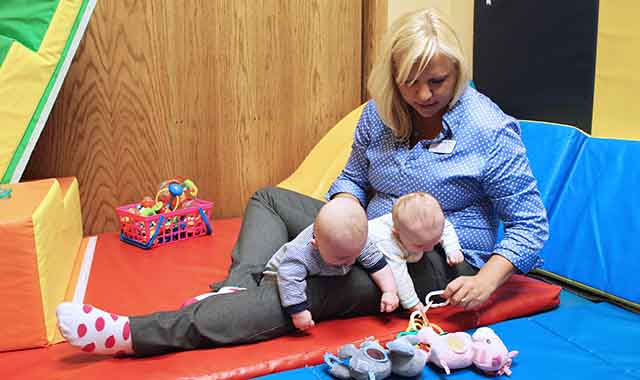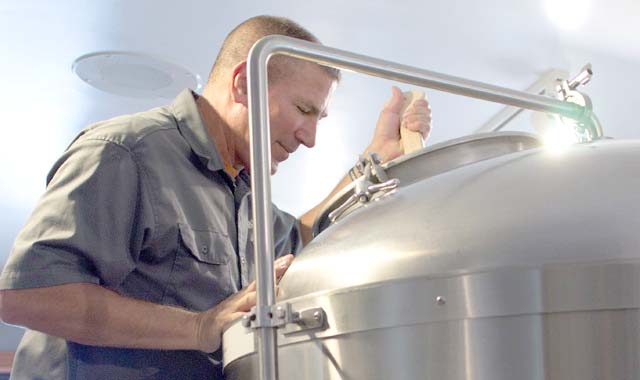Our children are constantly developing, but some get there faster than others. Amanda Helbling, MPT, of the Pediatric Place in Crystal Lake, shares how parents can help their kids to succeed.

Little by little, our children are growing and changing on their way to adulthood. But some get there a little faster than others.
According to the federal Centers for Disease Control and Prevention, about one in six children is diagnosed with some sort of a developmental delay.
Whether a child has a speech or language disorder, or is diagnosed with a more serious condition, such as intellectual and physical delays, autism, or genetic disorders, therapy can help to bridge the gap.
Amanda Helbling, MPT, physical therapist and clinical director of The Pediatric Place, 1095 Pingree Road, Crystal Lake, leads a team of certified occupational, physical and speech-language therapists who serve children from birth to 21 years old.
“Therapy can help children to achieve their highest potential,” says Helbling, a licensed physical therapist.
Helbling offers five basic tips for helping your child to successfully develop.
1. Give Babies Plenty of “Tummy Time”
Little ones develop their mobility, and build their muscles, by moving about. Too much time spent sitting around – in a car seat, a swing, or a crib – can eventually lead to muscle weakness, says Helbling. Inactivity can even lead to torticollis, a condition signaled by tight neck muscles and flat heads.
“We recommend that during at least half of their waking hours, babies are on their tummies,” says Helbling. “For example, if they’re awake for eight hours, have them play on their tummies for at least four hours. Play with toys, and stimulate their senses.”
2. Talk to Babies
Little ones soak up their world like a sponge, especially the voices of those around them. Studies show that the more quality interaction they have with people (as opposed to a computer or television screen), the more they’ll discover new words, patterns in speech and social context. Use exaggerated facial expressions, speak in “baby talk,” and encourage babies to try out their own voices.
“From a young age, we want to see babbling, making sounds,” says Helbling. “At two to three years old, most children are able to use words that we can understand. Generally, an 18-month-old should be able to speak about 50 words.”
3. Playtime Builds Coordination
Playtime and rigorous activities are just as important for older children. In fact, some studies show that children who have trouble sitting still in school don’t suffer only from inactivity – some of it is related to muscle weakness developed as a toddler. Organized sports activities, such as soccer or martial arts, can help kids to develop motor skills, but family recreation activities, such as riding bikes or playing in the backyard, are just as powerful.
“Get them out and active,” says Helbling. “Don’t let them just sit around all day playing video games.”
4. Consult Your Physician
Kids may experience developmental delays for any number of reasons, but when something seems amiss, or a child’s behavior interferes with everyday life, it may be time to speak with the family physician. Helbling sees many children who are overly sensitive to certain noises, foods, pieces of clothing and textures. This condition turns otherwise ordinary perceptions into negative experiences.
“We hear about kids who can’t go anywhere because of sensory processing disorder,” says Helbling. “They can’t go to the grocery store or to the playground, because it’s overwhelming for them. Occupational therapy can help children who struggle with sensory processing.”
5. Do Your Part at Home
Although regular therapy sessions can help your child’s development, carry-over at home is essential.
“Do your part, and be actively involved with therapeutic activities,” says Helbling. “Collaborate with your child’s therapist on a home program that has meaningful activities. Those activities will be individualized to your child’s needs.”





















































